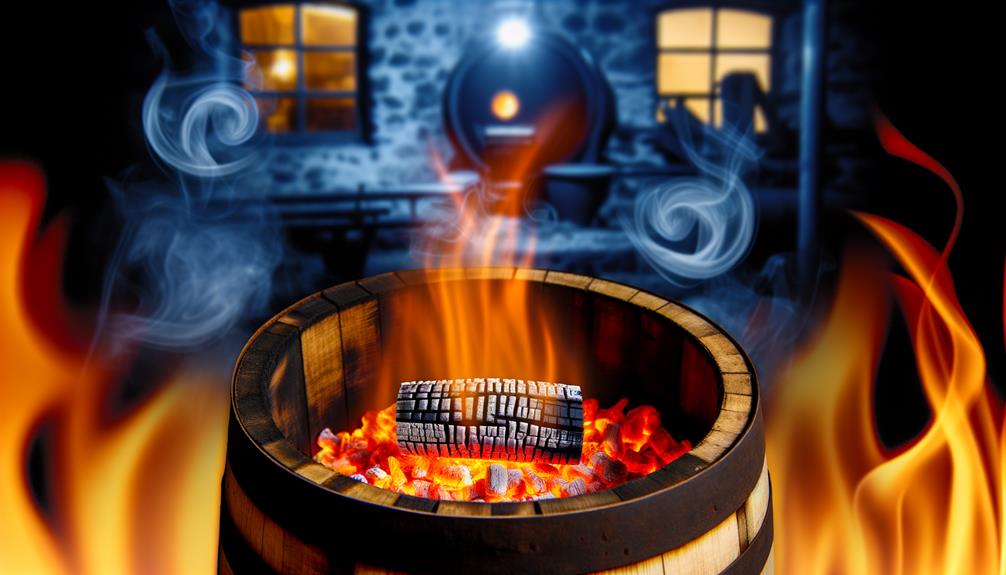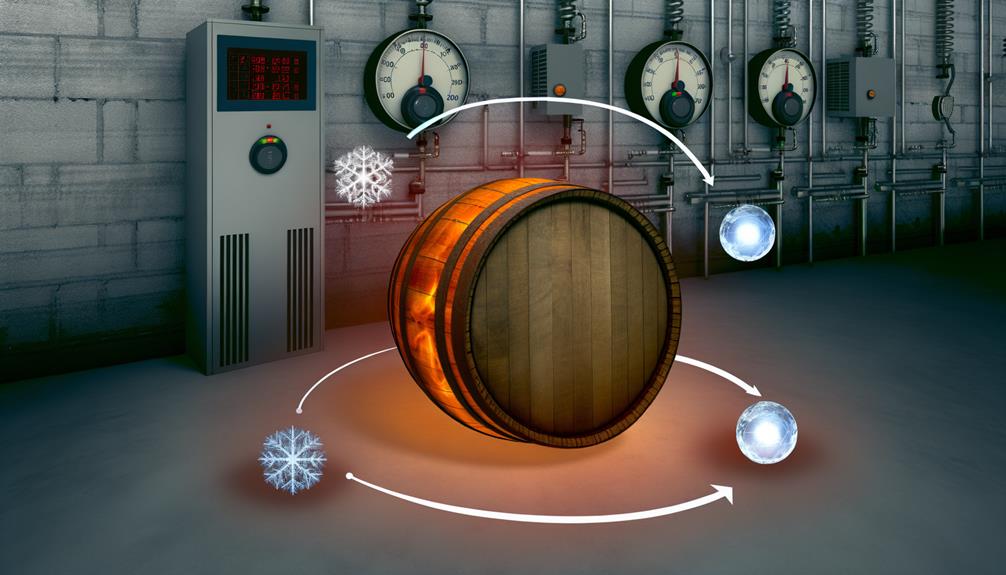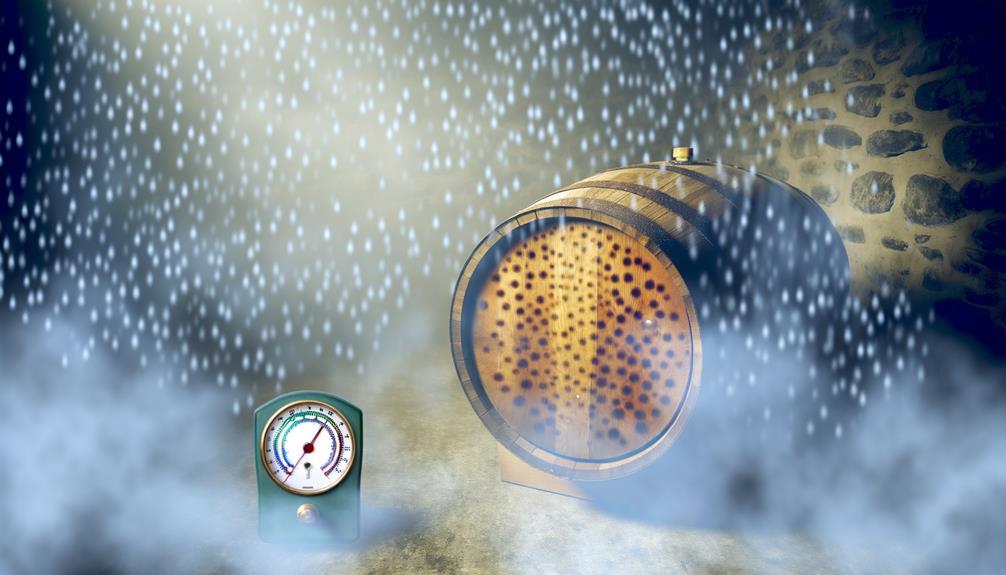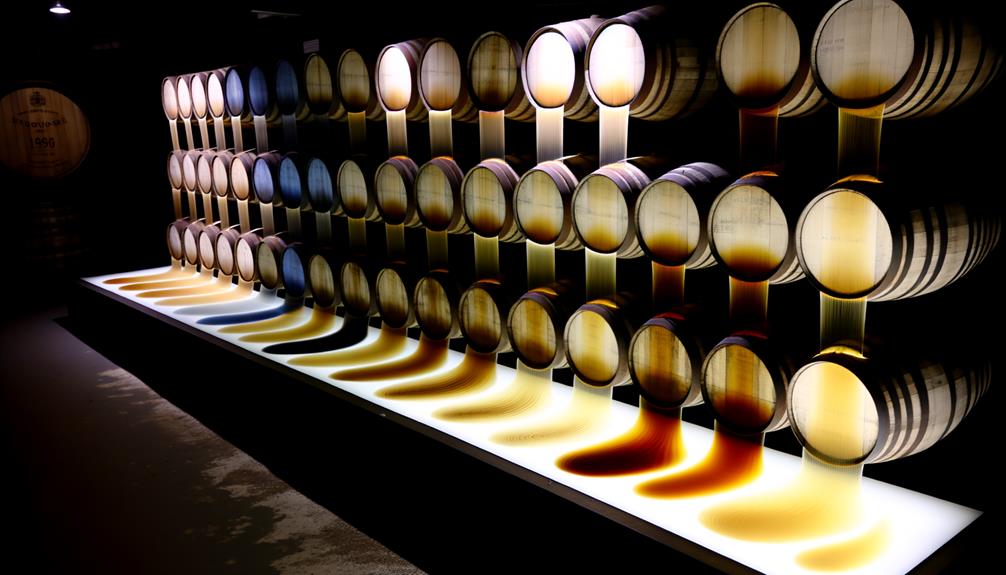You know, the way a painter’s canvas can shape the final artwork, that’s how a whisky barrel influences the maturation and overall character of whisky. I’ve spent quite a bit of time studying this complex interaction between whisky and wood. It’s a multi-layered topic that’s not as simple as it seems. From picking the best wood, to understanding the impact of barrel charring, to realizing how temperature and humidity affect the aging process – every aspect adds to the whisky’s final taste. And, you know what else? Each barrel type has its own unique effect on the flavor. But, let’s not rush things. First, let’s talk about the very core of whisky maturation – the barrel.
Selecting the Perfect Wood
Picking the Right Wood
Let’s talk about whisky maturation and the role of wood in flavor development. If you’re a whisky lover like me, you’ll know that the type of oak used, be it American, European, or Japanese, brings unique flavors and characteristics to the whisky. It’s like a complex dance between the whisky and the oak, resulting in a symphony of flavor notes.
When enjoying a glass of single malt, I’m more aware of the maturation process. I can taste how American oak casks or barrels have shaped the flavor. The hemicellulose and lignin in the oak are key players in creating flavors during this stage. As hemicellulose breaks down, it forms simple sugars that lend sweet notes to the whisky. And when lignin heats up, it produces vanillin, which offers the whisky its distinctive vanilla flavor.
Yet, the quality of a whisky barrel isn’t just about the type of wood used. The size of the barrel and the conditions in which it’s stored also play a part in the final product. Bigger barrels slow down maturation, while smaller ones speed it up. Similarly, the climate influences the rate at which the whisky interacts with the wood. It’s all about striking the right balance, ensuring each sip narrates its own unique story from grain to glass.
Importance of Barrel Charring

Let’s chat about the role of barrel charring in whisky-making, shall we? Imagine the scene: a whisky barrel, carved from oak, heated over an open flame. That’s where the magic begins, as the heat triggers a bunch of chemical reactions that spice up the dance between the spirit and the wood during the maturation process.
Barrel charring doesn’t simply darken the wood. It’s like a master chef at work, breaking down large sugar molecules into bite-sized pieces, which infuse the whisky with delightful caramel and vanilla scents. It’s a bit like a sieve, sifting out any compounds that would spoil the whisky’s taste. It also has a say in the final aroma and taste of the whisky, as different degrees of charring will affect the flavor extraction process. Not to forget, it plays a role in deciding the amount and type of flavor compounds that get extracted during whisky maturation.
Ever heard of the ‘alligator char’? This level of charring gets its name from the cracked, shiny look the inside of the barrel acquires, mimicking an alligator’s skin. This intense charring method really brings out the flavors, underlining the pivotal role barrel charring plays in brewing up a well-rounded, matured whisky.
Role of Temperature in Maturation

Let’s chat about the vital role temperature shifts have in whisky maturation. It’s all about how the spirit interacts with the wood, and temperature is one of the main factors influencing the quality of the whisky barrel.
When the temperature rises, the maturing whisky and the new oak barrels interact faster. This acceleration is a two-sided coin. On one side, it speeds up the process of extracting flavors from the oak, gifting the new spirit with the complex taste profiles that us whisky lovers are after.
But on the other side, these warmer conditions lead to a larger “angels share,” which is the whisky portion lost to evaporation. Plus, the oak’s influence becomes more pronounced, which could potentially dominate the spirit’s subtle notes if we don’t keep a close eye on it.
Now, when it comes to cooler temperatures, the maturation processes slow down. The whisky’s interaction with the oak is more measured, leading to a gradual and subtle development of flavors. Distilleries understand these temperature shifts and use them to produce distinctive whiskies, which shows that climate is indeed a key component in our favourite spirit.
To sum it up, think of temperature as the unseen force guiding the whisky’s voyage from new spirit to matured wonder.
Influence of Humidity on Aging

Just like temperature subtly guides the maturing process of whisky, humidity too, helps shape the final taste of the spirit. Humidity has a deep impact on the aging process. When the humidity is high, it slows down evaporation, causing less alcohol to escape, thereby making the matured whisky’s taste stronger. On the other hand, if the humidity is lower, evaporation can speed up, possibly enhancing the flavors while increasing the ‘angels’ share’.
In the production of whisky, the type of barrels used is quite essential. American white oak barrels, particularly new ones, are often chosen for their capacity to add desired flavors and remove undesirable compounds. But, barrels formerly used for bourbon also find their place in whisky production, as they give the spirit their unique traits.
Here’s the lowdown on how humidity impacts the maturing process of whisky:
- More humidity equals less alcohol escaping, which results in a stronger flavor profile.
- Less humidity can make evaporation faster, possibly boosting flavors.
- The barrel type can also influence the effects of humidity, with American white oak barrels being a common pick.
- Distilleries use changes in humidity to control the aging process.
Understanding Whisky Flavor Profiles

Let’s chat about whisky flavor profiles, shall we? You’d be surprised by the influence of different types of oak – such as American, European, and Japanese – on the unique taste and scent of whisky. Imagine the whisky industry as a sprawling oak forest. Each barrel is like a tree, with its individual tale that adds to the rich medley of flavors in your glass.
Did you know that whisky producers often use old barrels, specifically those that once held bourbon or sherry? This trick imparts the whisky with vanilla, caramel, and luscious fruit flavors, lending depth and intrigue to the single malts.
It’s not just the type of barrel that matters though. The barrel’s size and origin, along with the local climate, are key factors in the whisky’s maturation process. This is where whisky-making transforms into an art form. An expert distiller knows how to mix and match these elements to craft a unique flavor profile – a true mark of their skill and devotion.
Frequently Asked Questions
What Makes a Good Whiskey Barrel?
So, what exactly determines the quality of a good whiskey barrel? It all comes down to the oak. High-quality oak, usually from America or Europe, is the core of a top-notch barrel. But it’s not just about the oak itself. Factors like the barrel’s shape, size, and how fresh it is also play crucial roles. These elements collectively influence how the whiskey matures over time. Clear, simple, and straight to the point, right?
What Is Maturation Process in Whiskey?
So, you’re wondering about the maturation process in whiskey, right? Let’s chat about that. Maturation is like the aging phase for whiskey, where it hangs out in oak barrels soaking up all these lovely colors and tastes – think vanilla and toffee yumminess. This isn’t just a random event, though. The size of the barrel, the type of wood it’s made from, and even the climate all have a say in how the whiskey transforms. Think of it like the coming-of-age story for whiskey, where it develops its unique personality.
What Is the Best Whiskey to Age in a Barrel?
Picking the top-notch whiskey to mature in a barrel can be likened to choosing a premium wine. It hinges on several elements including the type of oak, the condition of the cask, and its size. Every one of these aspects has a unique effect on how the whiskey matures over time.
What Does 1st Fill Mean in Scotch Whisky Maturation?
When we talk about the maturation process of Scotch whisky, the term ‘1st fill’ might come up. Ever wondered what that means? Well, when a cask is used for the first time to age Scotch, we refer to it as a ‘1st fill’. Since the cask is fresh, it gives off strong flavors that can have a big impact on the final taste of the whisky. So, the ‘1st fill’ is a key step in defining the unique flavor profile of your favorite dram!

